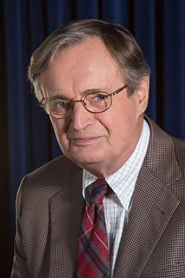(1) PKD COMING TO THE STAGE. “Minority Report drama to feature in Lyric Hammersmith’s ‘really bold’ spring lineup” reports the Guardian. Olav Rokne says, “All I want is for this to be a musical.”
A female-led adaptation of the science fiction blockbuster Minority Report is among a new season of works at London’s Lyric Hammersmith theatre, announced on Monday, placing women at its centre.
Steven Spielberg’s film, about a predictive near-future criminal justice dystopia, was based on a Philip K Dick story and starred Tom Cruise as the pre-crime chief who becomes a fugitive. The play, however, makes the hunted hero a female neuroscientist called Dame Julia Anderton. Set in 2050 and adapted by David Haig, it is produced by the Olivier award-winning team behind Life of Pi, and directed by Max Webster.
The theatre’s artistic director, Rachel O’Riordan, says the play, opening in April, will use “the most cutting-edge technology there is” for its visual effects and ambitious design concept….
(2) YOUR GO BAG. Colulmnist Emma Beddington poses a question in the Guardian: “What’s in your go bag for the apocalypse?”
The author Lauren Groff has become a prepper. “I think everyone should have a go bag right now,” she told National Public Radio (NPR) in the US. “I think every household should have enough food to last through at least two weeks. This is just logical at this point.”
Groff lives in Florida, where dangerously extreme weather has become a fact of life – we’re lucky enough to be spared that in the UK, at least for now. But as a semi-professional catastrophist – one apocalyptic sandwich board short of full doom-monger status – am I missing a trick? Should I have a go bag and what should go in it?…
(3) CHENGDU WORLDCON UPDATE. [Item by Ersatz Culture.]
- A couple of panoramic views of the con site — Original Weibo post: https://weibo.com/1863182593/NkYiGt8Ro


- More photos on Xiaohongshu — http://xhslink.com/2ieRTu
These include more mundane images of what I assume is the surrounding area, including a light rail station and signage.
- “Fantasy of the Future, Chasing the Global Light” media programme — https://mp.weixin.qq.com/s/Pwx9nUzRLi1OjDWL3UFq5w
It’s not completely clear to me what exactly this is – it seems that several of the organizations involved in the behind-the-scenes promotion of the con are doing some interviews with science and SF people from around the world. When these interviews might appear, and whether they’ll be text articles, videos, or something else, doesn’t seem to be stated.
Perhaps it’s also worth noting that this is the second Worldcon related article I’ve seen in as many days that namechecks Xi Jinping…




(4) HWA LATINX Q&A. The Horror Writers Association blog continues its “Latinx Heritage in Horror” series in “Interview with Luisa Colón”.

What has writing horror taught you about the world and yourself?
Writing horror has really brought me to a place of peace and acceptance of myself that I’ve never had before. There is a tendency for a lot of people to suppress pain, dark thoughts, and traumatic experiences, both in themselves and in others. “Try not to dwell on it,” “Don’t be so morbid,” “Why do you want to put depressing stuff out into the world?” I’ve heard it all, and it all boils down to “Don’t be yourself because being yourself is the wrong way to be.” Talk about chronic invalidation! Now suddenly I feel like I have a place in this world where I belong, where it’s okay to be me—more than okay. And that has taught me something not just about myself but about the world around me.
(5) UPDATED ASIMOV BIBLIOGRAPHY. Steven Cooper has released a revised version of his “An Annotated Asimov Bibliography”.
The files linked below are the end result of a project I have been working on at intervals since July 2017, with the object of compiling as complete an account as possible of the works of Isaac Asimov (1920-1992). The original edition (running to 676 pages) was released just before what would have been his one-hundredth birthday: January 2, 2020. The reaction from others was gratifyingly positive, but comments from my correspondents also highlighted a number of inaccuracies, missing items, and various other deficiencies that prevented the bibliography from being quite as definitive as I had hoped. A minor update was made in March 2020 in response to some of this feedback, but the larger issues remained unaddressed. These, along with the uncovering of a great deal of further information that was not available to me earlier, clearly showed the need for a thorough revision.
Three and a half years later, the revision is finally complete, resulting in a new edition nearly a third longer than the original. Of course, not all of this increased page count represents items that were missed in the original edition, though there are several dozen such additions, and hundreds of previously unknown reprint publications have been added. The index of periodical publications (Part IV) is now expanded to include newspaper publications as well as magazines, and the provision of new page-based indexes throughout fixes a serious shortcoming of the original edition. The format of the individual catalogue entries has also been improved, notably in the documenting of alternate titles, excerpts and abridgements, and non-Asimov variants (there is also a new introductory section providing a detailed description of the catalogue entries’ format and features). Finally, the addition of running section headings and PDF bookmarks should significantly enhance the usability of the new edition….
(6) TRAINED ON STOLEN BOOKS. Today authors have been using a searchable database at The Atlantic to see if their books are part of the Books3 collection used to train AI. Although this gift link will take you to the article, neither of the browsers I used to read it would bring up the search tool. Don’t ask me why. “These 183,000 Books Are Fueling the Biggest Fight in Publishing and Tech”. But here are a couple of responses authors have posted to X.
(7) WE CONTROL THE VERTICAL. GoldDerby’s Susan King celebrates as “’The Outer Limits’ turns 60”.
Where were you Sept. 16, 1963? If you were a self-respecting baby boomer, sci-fi nerd or an intellectual intrigued by the subject matter, you probably were in front of the television to watch the premiere of ABC’s thought-provoking and often terrifying anthology series “The Outer Limits.”…
As a matter of fact, that’s exactly where I was that night.
… The series was especially meaningful to writer Joseph Stefano, who is best known for his screenplay for “Psycho,” who produced the first season of “The Outer Limits,” as well as penning 12 episodes…
…I talked to Stefano about my favorite episode “The Man Who Was Never Born,” starring Landau and Knight in which a transmuted human of the future travels back to 1963 to stop the birth of a scientist who creates a bacterium that will turn humanity into mutants. While on earth he uses hypnosis to transform into a handsome, perfectly normal human. He soon finds himself in love with the young woman who will become the mother of the scientist. “”The Terminator’ was taken from that,” Stefano noted. “Anthony Lawrence wrote that. It was one of the most beautiful shows we did. I had a trick of saying, ‘let’s do a haircut’ on something, like let’s do a haircut on ‘Beauty and the Beast.’ Landau loved the part, he noted, because he got to be the horrendous mutant “and at the same time look very handsome and be loved.”…
(8) DAVID MCCALLUM (1933-2023). Actor David McCallum, known especially for his work on The Man From U.N.C.L.E. and NCIS, died September 25 reports The Wrap.

[McCallum], who played Dr. Donald “Ducky” Mallard on CBS procedural “NCIS” and Illya Kuryakin on ’60s series “The Man From U.N.C.L.E,” has died at 90….
After moving to America in 1961, he was cast in the role of Russian agent Illya Kuryakin in “The Man from U.N.C.L.E,” a role that earned him two Emmy Award nominations and a Golden Globe nod. He went on to star in films including “The Greatest Story Ever Told,” “The Great Escape,” “Billy Budd,” “Freud” and “A Night to Remember.”
In the ’70s, he headlined the series “The Invisible Man,” later appearing in the BBC Mystery! “Motherlove,” as well as episodes of “The Outer Limits,” “Law & Order” and “Sex and the City.”…
And The Hollywood Reporter reminds us:
…McCallum also starred opposite Joanna Lumley for four seasons on the 1979-82 British sci-fi series Sapphire & Steel (she was Sapphire, he was Steel) — a show many see as a precursor to The X-Files …
(9) TODAY’S BIRTHDAYS.
[Compiled by Cat Eldridge.]
- Born September 25, 1919 — Betty Ballantine. With her husband Ian, she created Bantam Books in 1945 and established Ballantine Books seven years later. They won one special World Fantasy Award for professional work in 1975 and another one shared with Joy Chant et al for The High Kings which is indeed an amazing work. ISFDB list one novel for her, The Secret Oceans, which I’ve not read. Anyone here done so? (Died 2019.)
- Born September 25, 1930 — Shel Silverstein. Yes we’ve decided in previous Scrolls that he’s genre. I’m fond of his poetry collection Where the Sidewalk Ends and The Giving Tree. (No, I don’t think the relationship between them is abusive.) I’ll also note here A Light in the Attic if only because it’s been on “oh my we must ban it now attempts” all too often. Oh, and I’d be remiss not to note he wrote Cash’s “A Boy Named Sue”. Why would I be remiss? Just because. (Died 1999.)
- Born September 25, 1932 — J. Hunter Holly. Her various book dedications showed she had a strong love of cats. I’ve not encountered her novels but she wrote a fair number of them including ten genre novels plus The Assassination Affair, a novel in The Man from U.N.C.L.E. franchise. Only The Flying Eyes novel by her is available from the usual digital suspects. (Died 1982.)
- Born September 25, 1946 — Felicity Kendal, 77. She plays Lady Clemency Eddison in the the Tenth Doctor story, “The Unicorn and The Wasp”, one of my favorite Who tales which I reviewed at Green Man here. She played Baroness Ortsey in the Pennyworth series. And though it’s definitely really not genre, I’m noting her role in Shakespeare-Wallah, story of a family troupe of English actors in India, just because it’s a fascinating story.
- Born September 25, 1951 — Mark Hamill, 72. I’ll confess that my favorite role of his is when he voices The Joker in the DC Universe. He started doing this way back on Batman: The Animated Series and has even doing on other such series as well. Pure comic genius! Oh, and did you know he voices Chucky in a Child’s Play film? Now that’s creepy.
- Born September 25, 1952 — Christopher Reeve. Superman in the Superman film franchise. He appeared in the Smallville series as Dr. Swann in the episodes “Rosetta” and “Legacy”. His Muppet Show appearance has him denying to Miss Piggy that he’s Superman though he displays those superpowers throughout that entire episode. (Died 2004.)
- Born September 25, 1961 — Heather Locklear, 62. Her first genre role was Victoria ‘Vicky’ Tomlinson McGee in Stephen King’s Firestarter followed by being Abby Arcane in The Return of Swamp Thing. She was also Dusty Tails in Looney Tunes: Back in Action. She’s had one-offs in Tales of the Unexpected, Fantasy Island, Muppets Tonight and she voiced Lisa Clarkson in the “Prophecy of Doom” episode on Batman: The Animated Series.
- Born September 25, 1977 — Clea DuVall, 46. A long genre history if we include horror (and I most gleefully do) — Little Witches, Sleeping Beauties, Ghosts of Mars and How to Make a Monster. Series appearances include Buffy the Vampire Slayer, a main role on Carnivàle as Sofie Agnesh Bojakshiya (loved that series), a recurring role as Audrey Hanson on Heroes, and though we didn’t see it, she was in the unsold television pilot for the never to be Virtuality series as Sue Parsons, she had a recurring role in American Horror Story: Asylum as Wendy Peyser, and finally another recurring role in The Handmaid’s Tale as Sylvia.
(10) COMICS SECTION.
- Thatababy shows a favorite kids book given a dark sff turn.
- A Tom Fishburne cartoon about so-called smart appliances.
(11) SCORSESE Q&A. “Martin Scorsese: Christopher Nolan Can Combat Comic Book Movies” says the director in a Variety interview.
In a sprawling new profile with GQ, director Martin Scorsese discussed comic book and franchise culture, a topic which he has spoken out about at length in the past.
When asked about those blockbusters, Scorsese said that their omnipresence could be negative to audiences who aren’t well-versed in other types of film.
“The danger there is what it’s doing to our culture,” he said. “Because there are going to be generations now that think movies are only those — that’s what movies are.”
When the interviewer posited that audiences might already believe that, Scorsese agreed.
“They already think that,” he said. “Which means that we have to then fight back stronger. And it’s got to come from the grassroots level. It’s gotta come from the filmmakers themselves. And you’ll have, you know, the Safdie brothers, and you’ll have Chris Nolan, you know what I mean? And hit ’em from all sides. Hit ’em from all sides, and don’t give up. Let’s see what you got. Go out there and do it. Go reinvent. Don’t complain about it. But it’s true, because we’ve got to save cinema.”…
(12) CLICK ALONG. Entertainment Weekly must not have gotten the memo from Scorsese because they’re eager for you to click through their gallery “Every Marvel Cinematic Universe movie ranked”. The 2008 Incredible Hulk is at the bottom of the list.
The Marvel Cinematic Universe just keeps growing. It’s been more than a decade since Robert Downey Jr. donned a metal suit and introduced the world to Iron Man in 2008, and since then, the MCU has become one of the biggest and most successful film franchises in history. Part of what makes the series so much fun to follow is its constant evolution: Installments range from moody character studies to gleefully zany space operas, stretching from distant worlds to the down-to-earth streets of Queens. Here, EW takes on the Hulk-sized task of ranking each entry….
(13) POPULAR PINK PIRACY. [Item by Mike Kennedy.] Barbie, but apparently not Barbenheimer, is paying an unofficial visit to Russia. Behind a paywall in The Times (UK): “Proud to be pink: Russians rush to see bootleg Barbie”.
On the streets of Russian towns there are no posters for the Barbie movie. There was no official release. The owner of the screening rights, Warner Bros, swiftly left Russia after President Putin’s invasion of Ukraine and did not give permission for distribution here.
Nevertheless, “Barbiemania” took Russia by storm long before the film arrived in cinemas and Greta Gerwig’s vivid monument to American capitalism has become the film of the year. It finally appeared in cinemas on September 14, two months after the world premiere.
This summer more and more people started wearing pink on the streets of Moscow, while restaurant guides started publishing their top picks of places with pink food for those wishing to eat out “Barbie style”. Russian Instagram turned pink — even though Meta is officially an “extremist resource” in Russia. Instagram users made themselves up as Barbies or Kens and flooded social media. Pink nails and blonde hair are back on trend.
A 250 sq ft “House of Barbie” has popped up in Moscow’s Kuntsevo shopping centre. In the pink pavilion you can take photos of yourself for an hour for 500 roubles (£4.25). The manager tells me it is busiest at the weekend, when entertainers dressed as Barbie and Ken put on a soap-bubble show for children.
Since the war began, Russia has yet to come up with a legislative framework for the “parallel release” of western films. When the first bootleg versions of the Barbie film turned up in June, it was a DCP (digital cinema package) file from Kazakhstan. That supply line was soon closed. Now Russian venues are showing a digital version designed for streaming platforms, not cinemas.
I opt to watch the film in one of Moscow’s “Kinomax-XL” theatres. It is advertised as a “pre-session service” before the supposed main event: Sclerosis, a Russian short film released in 2021 about a female pensioner fooled by telephone scammers.
This means that officially you are not buying a ticket to see Barbie. On cinema timetables, Barbie is nowhere to be seen; Sclerosis accounts for half the show listings….
(14) HOIST AWAY. “Solar sails could reach Mars in just 26 days” according to at article at Phys.org.
A recent study submitted to Acta Astronautica and currently available on the arXiv preprint server explores the potential for using aerographite solar sails for traveling to Mars and interstellar space, which could dramatically reduce both the time and fuel required for such missions.
This study comes while ongoing research into the use of solar sails is being conducted by a plethora of organizations along with the successful LightSail2 mission by The Planetary Society, and holds the potential to develop faster and more efficient propulsion systems for long-term space missions.
“Solar sail propulsion has the potential for rapid delivery of small payloads (sub-kilogram) throughout the solar system,” Dr. René Heller, who is an astrophysicist at the Max Planck Institute for solar system Research and a co-author on the study, tells Universe Today. “Compared to conventional chemical propulsion, which can bring hundreds of tons of payload to low-Earth orbit and deliver a large fraction of that to the moon, Mars, and beyond, this sounds ridiculously small. But the key value of solar sail technology is speed.”…
(15) GOOD NIGHT MOON LANDER. [Item by Mike Kennedy.] The Lunar lander/rover combo from India that touched down near the Moon’s south pole last month operated just fine for the first fortnight or so. After being put to sleep for the Lunar night, however, it failed to re-awaken at Lunar dawn as hoped. “Hope fades for India’s moon lander after it fails to wake up” (paywalled in The Times (UK).)
Extreme temperatures at the moon’s south pole may have damaged India’s spacecraft which landed there last month, raising doubts over whether communication can be re-established.
Scientists at the Indian Space Research Organisation (Isro) have been trying to contact both the Vikram lander and the Pragyan rover from the pioneering Chandrayaan-3 mission since putting them into “sleep” mode earlier this month.
The probes had previously been deployed and gathering data as planned but now scientists fear that the temperatures during the lunar night — which can drop to between minus 200C and minus 250C — may have cut off contact….
[Thanks to Mike Kennedy, Andrew Porter, Ersatz Culture, John King Tarpinian, Olav Rokne, Kathy Sullivan, Lise Andreasen, Chris Barkley, Cat Eldridge, and SF Concatenation’s Jonathan Cowie for some of these stories. Title credit belongs to File 770 contributing editor of the day Cat Eldridge.]
